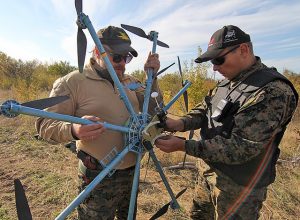Yo-Yo

The Yo-Yo is a deceptively simple toy that was around way before iPads, electronic games and many popular board games. Though often thought of as a child’s entertainment, there are also adults who enjoy learning yo-yo tricks. As you can see in this picture, there are a few types of yo-yo, each of which has its own unique abilities. The Modified version is good for tricks where you want the yo-yo to move rapidly up and down the string. The butterfly is good for string tricks where you might want to deliberately catch the yo-yo on the strings. The Imperial version is a good beginner’s version for just learning how to handle a yo-yo. Whichever version you choose, it’s a good toy for hours of entertaining fun.
(Image Credit: Your Friend Tony)
Basic Yo-Yo Tricks Demonstrated
History of the Yo-Yo
 The earliest known version of the Yo-Yo dates back to 500 B.C. and was made using terra cotta skin disks. The Greeks certainly knew about this toy, with artifacts depicting boys using the yo-yo and records of versions made with wood, metal or fired clay. The fired clay version was used in Greek coming-of-age ceremonies in which the boy symbolically gave up the toys of youth by giving his yo-yo to the gods. The idea that this device was originally used as a weapon has been largely debunked by experts though this version of the yo-yo’s origin is still a part of popular mythology.
The earliest known version of the Yo-Yo dates back to 500 B.C. and was made using terra cotta skin disks. The Greeks certainly knew about this toy, with artifacts depicting boys using the yo-yo and records of versions made with wood, metal or fired clay. The fired clay version was used in Greek coming-of-age ceremonies in which the boy symbolically gave up the toys of youth by giving his yo-yo to the gods. The idea that this device was originally used as a weapon has been largely debunked by experts though this version of the yo-yo’s origin is still a part of popular mythology.
It migrated to the Philippines, where it acquired its modern name derived from the Tagalong word for “come-come” or “return.” The Filipinos added a new technique for attaching the string to the axle, making yo-yo tricks like “sleep” possible. The modern version of the yo-yo was first manufactured in 1928 by the Yo-Yo Manufacturing Company. It was a huge hit and the company expanded to include three companies producing 300,000 toys daily. Duncan Toys Company bought the Yo-Yo Manufacturing Company soon afterwards. Sales declined after World War II but surged again in the 1960s thanks to a publicity blitz. By then, Duncan was facing some competition and lost a court battle when an appeals court ruled that the term yo-yo had entered the public vernacular and could no longer be patented. The Duncan company was later sold and still manufactures yo-yos and other toys.
More recent innovations like the ball bearing and high-performance designs make new tricks, longer spins and easier returns possible. The original yo-yos are considered to be collectors’ items and there are still yo-yo tournaments worldwide.
(Image Credit: Wikipedia)
The Chinese Yo-Yo
Have you already gotten bored with the usual Yo-Yo? If so, this version gives enthusiasts a whole new challenge.








